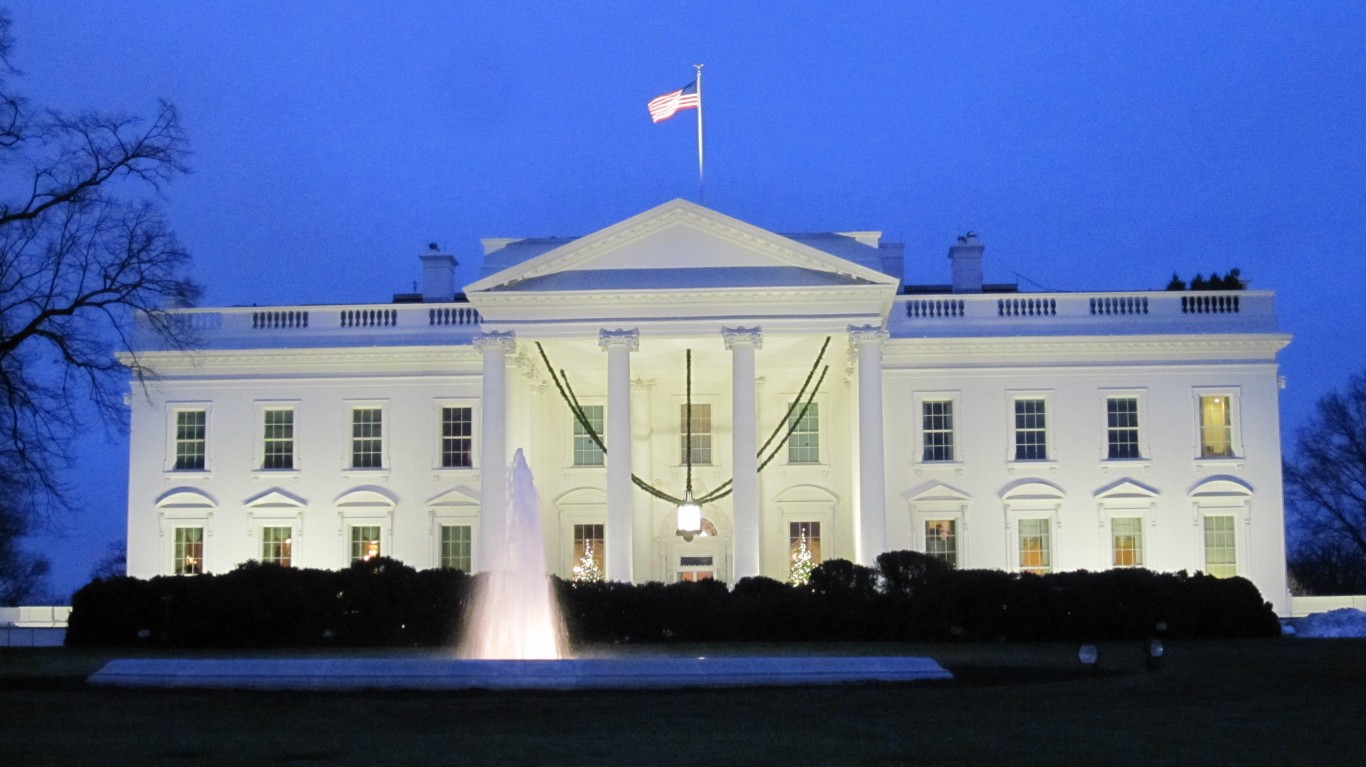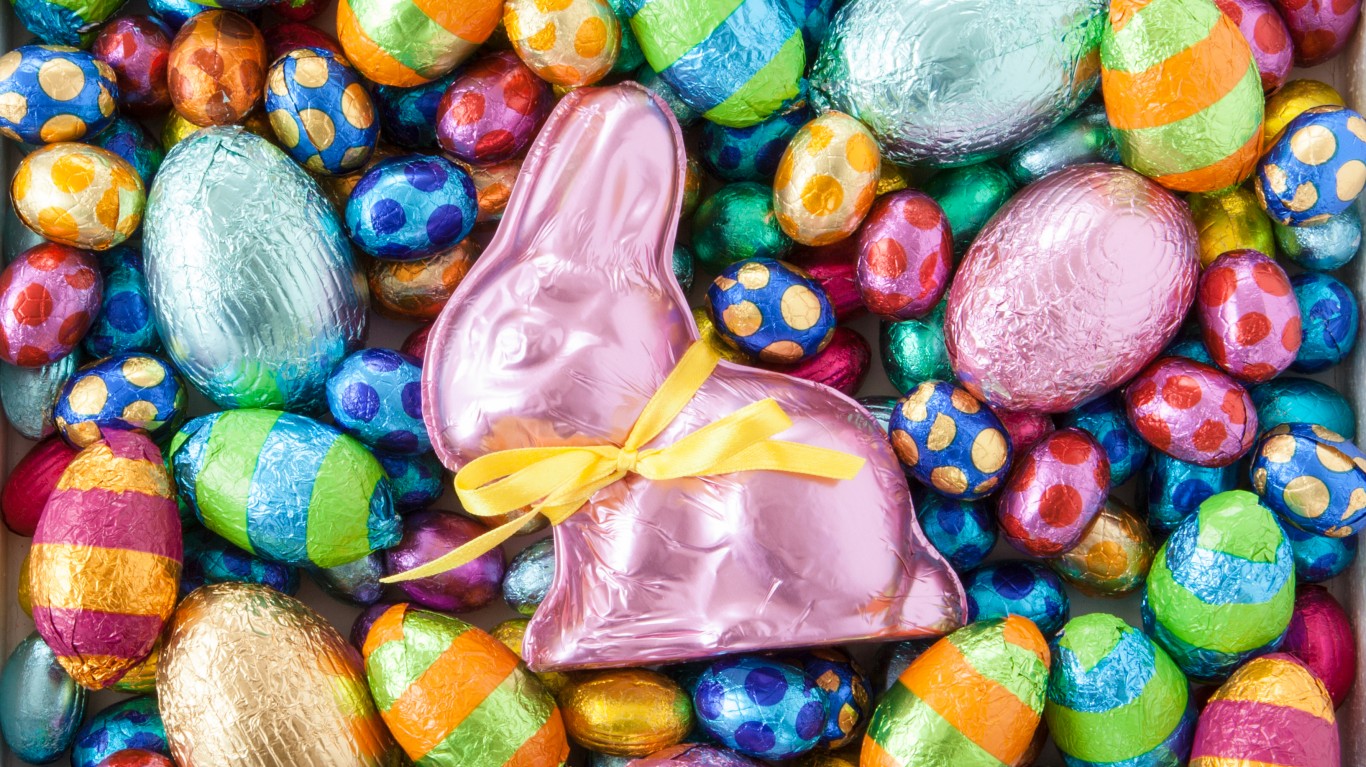
Easter, the day Christians celebrate the resurrection of Jesus Christ, is one of the biggest holidays in the U.S. Though Easter 2021 may look different than in years past because of the COVID-19 pandemic, millions of Americans are still planning to celebrate the holiday with worship services, egg hunts, candy, and elaborate dinners.
Though less than two-thirds of Americans identify as Christians, nearly 80% plan to celebrate Easter in some way. This is expected to translate to over $21 billion in Easter spending, as observers of the holiday buy new outfits, ingredients for Easter dinner, and candy for the kids (and maybe a bit for the adults, too).
To identify 26 fun facts about Easter, 24/7 Tempo reviewed recent consumer surveys and national polls, including from National Retail Federation’s Annual 2021 Easter Spending Survey, the White House Historical Association, Guinness World Records, as well as information collected by WalletHub.
Though the majority of Americans observe Easter, there are differences in the way people celebrate. Each year, Easter also sparks heated debate about the proper way to eat a chocolate Easter bunny, whether marshmallow Peeps are tasty or terrible, and which meal counts as a traditional Easter dinner.
Though Americans might be accustomed to a baked ham or lamb for their meal, other countries celebrate with pickled fish, sweet cakes, or home brewed beer. These are traditional Easter foods from around the world.
Click here to see 24 fun-filled facts for Easter 2021
To identify 26 fun facts about Easter, 24/7 Tempo reviewed recent consumer surveys and national polls, including from National Retail Federation’s Annual 2021 Easter Spending Survey, conducted by Prosper Insights & Analytics, the White House Historical Association, Guinness World Records, as well as information collected by WalletHub.

1. Most Americans will celebrate Easter
According to a National Retail Federation survey, 79% of Americans said they would be celebrating Easter in 2021. This is a much larger share than the percentage of Americans who identify as Christian, at 65%.
The percentage of celebrants has been relatively consistent over the past decade, even as church membership and religious affiliation have dipped. 2020 marked the first year in which less than half of all American adults belonged to a church, synagogue, or mosque.
[in-text-ad]

2. Very few will work on Easter
Some of the most common ways to celebrate Easter are attending church services (either live or virtually) and cooking holiday meals and visiting family. Still, some of those who observe the holiday do not have the day off. About 3% of adults who celebrate Easter said they planned to work that day.
Younger adults, age 18-24, who celebrate are more than twice as likely to work as observers in all other age groups. Though Easter occurs on a Sunday every year, hourly workers may not be able to get the day off.
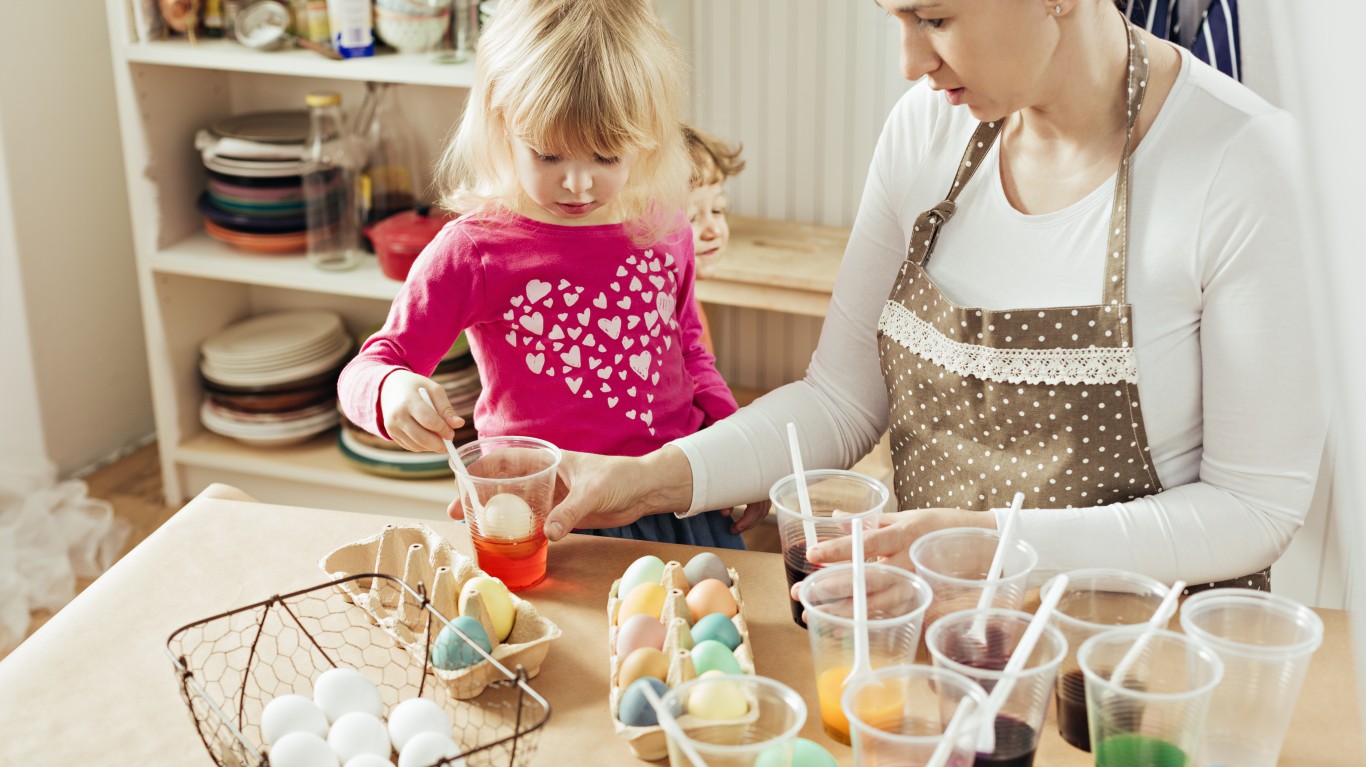
3. Easter eggs date back long before Easter
Easter eggs — either dyed or filled with candy — are one of the most commonly held Easter traditions, as far back as anyone can remember. Yet there are some scholars who believe these kinds of eggs predate the holiday. The origins are believed to be based on an Anglo-Saxon spring festival to honor the goddess Eastre, at which celebrants ate and buried eggs as a symbol of fertility and rebirth. Christian missionaries may have attempted to make conversion easier by adopting these traditions.
Others say this tradition dates back to the medieval period. Eggs, which were among the animal products forbidden during the pre-Easter period of Lent, were hard boiled during Lent and distributed to peasants who could not afford meat around the holiday.

4. Less than half plan to visit family and friends in person
For Christians, Easter is a time of togetherness, and despite the COVID-19 pandemic, nearly half of all observers — specifically, 42% of men and 45% of women — said they are going to visit family and friends in person. This is down from 2018, when over 60% of Easter observers said they would visit family and friends.
Just under a quarter of people celebrating Easter said they plan to visit friends and family virtually, though some are likely planning to do both.
[in-text-ad-2]

5. An estimated $21.6 billion will be spent celebrating Easter
Between candy, dinner ingredients, eggs, outfits, and more, the average person celebrating Easter expects to spend around $180 on their 2021 festivities. Altogether, this adds up to $21.6 billion in holiday spending.
That $21.6 billion figure is just below the expected spending in 2020, though that survey was conducted before COVID-19 hit. Prior to 2020, in no single year did Americans plan to spend over $152 per person (or $18.4 billion total) on Easter celebrations.
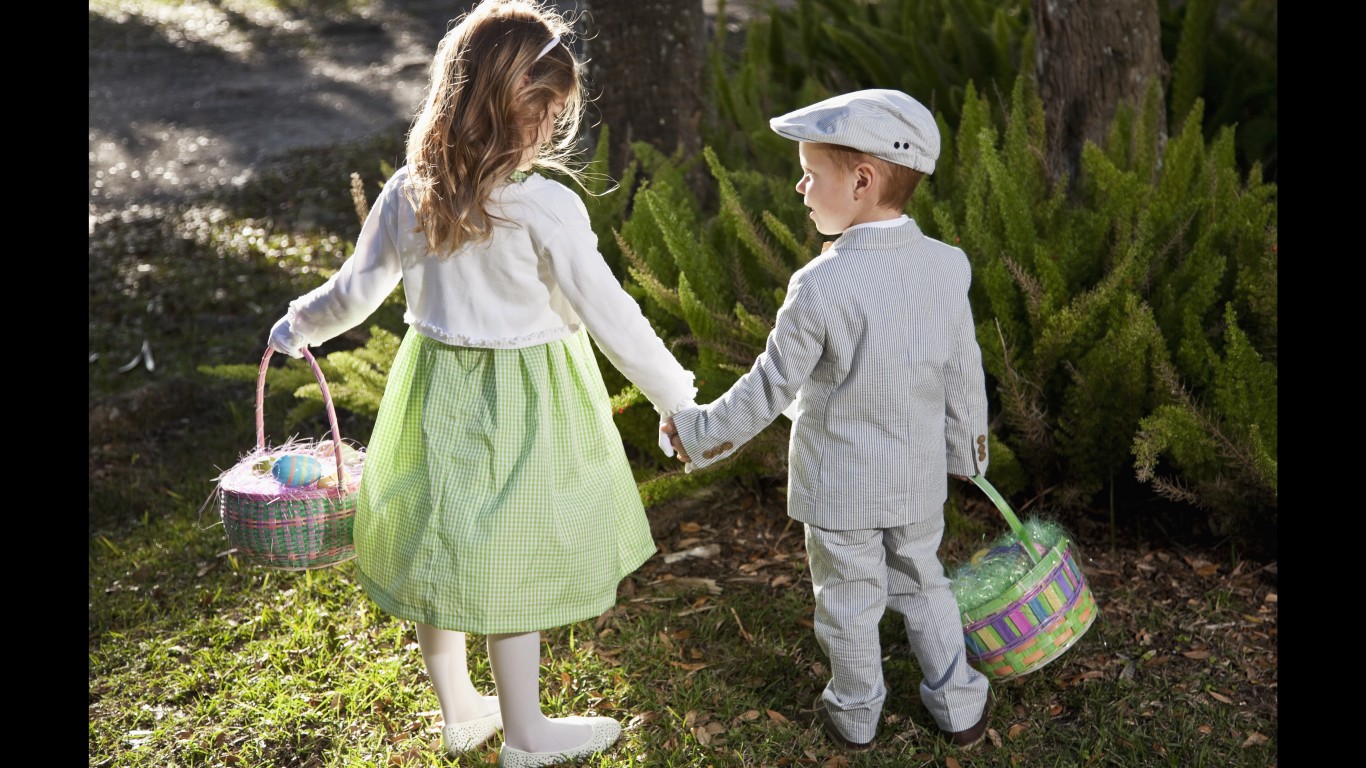
6. Wearing new clothes at Easter is a superstition
Easter is a celebration of new beginnings and rebirth. As such, Christians often wear new, clean clothes for Easter Sunday church services. Some consider it to be good luck.
This tradition may date as far back as 300 A.D., when Roman Emperor Constantine required his court to wear new clothes for Easter. For centuries, white clothes were traditional. In the 12th century, the Catholic Church took on colors like red, violet, pink, and green to mark the occasion as they symbolically represent springtime colors and flowers common around Easter. These days, pastels are commonly worn.
[in-text-ad]
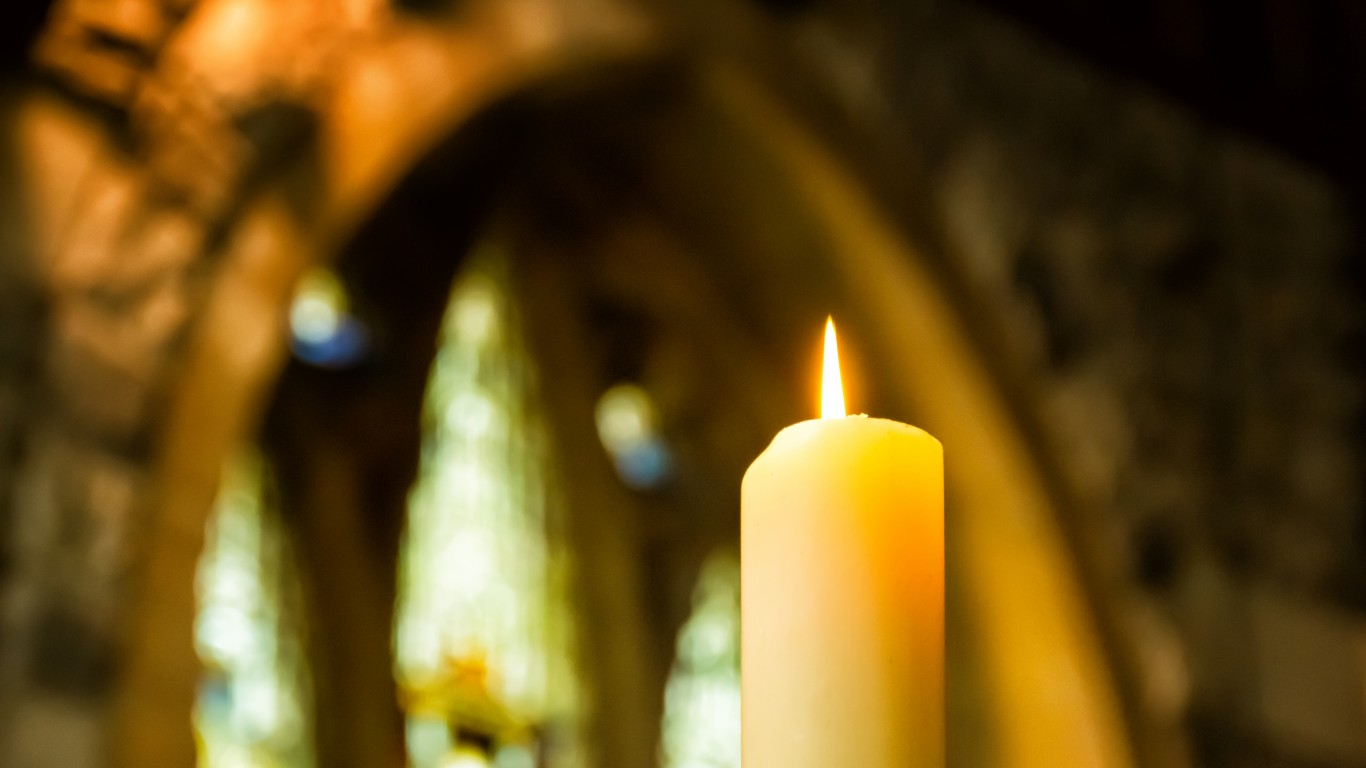
7. Almost 1/3 of men and 1/4 of women will attend church in person
Though COVID-19 is still infecting tens of thousands of Americans each day — down from the beginning of the year but in line with daily case levels last summer — many Easter celebrants are planning to attend church services in person. Among those who celebrate, 30% of men and 26% of women are planning to go to church, while 20% of men and 23% of women say they will attend church virtually.
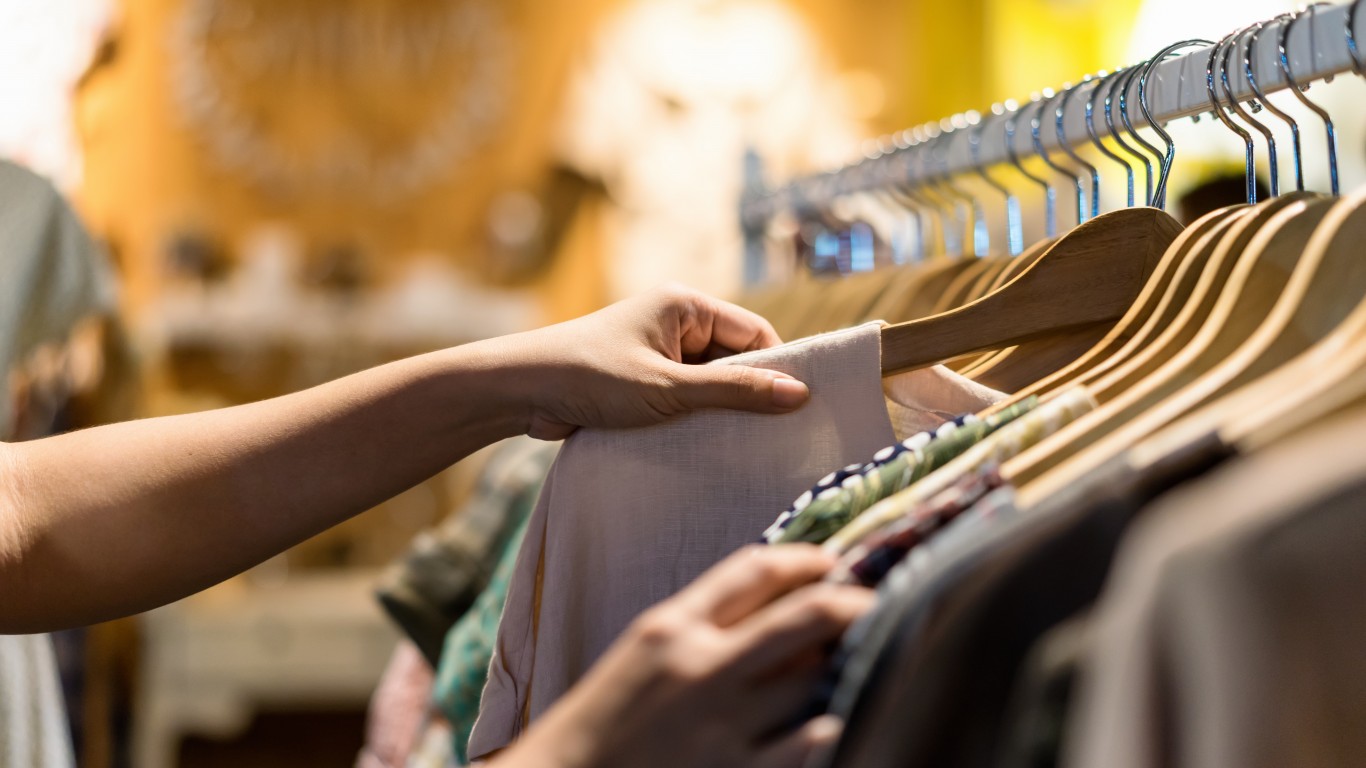
8. $3.6 billion to be spent on clothing
As mentioned, one of the many Easter traditions is wearing a new outfit for church. Nearly half of all adult Easter observers — both male and female — plan to buy clothes for Easter 2021. Adults aged 25-34 are the age group most likely to buy new Easter clothes, at 70%.
Americans are expected to spend a total of about $3.6 billion on clothing, which may include flower dresses, bunny onesies for babies, or pastel-colored pants. Many clothing stores have Easter sales.

9. $3 billion to be spent on candy alone
For many, no Easter is complete without candy. Americans are planning to spend about $3 billion on Easter candy. These projected sales include 91 million chocolate bunnies and 16 billion Jelly Beans.
According to a recent RetailMeNot survey, Americans’ favorite Easter candies are Reese’s Mini Peanut Butter Eggs, Jelly Beans, Cadbury Eggs, Chocolate Bunnies, and Peeps.
[in-text-ad-2]
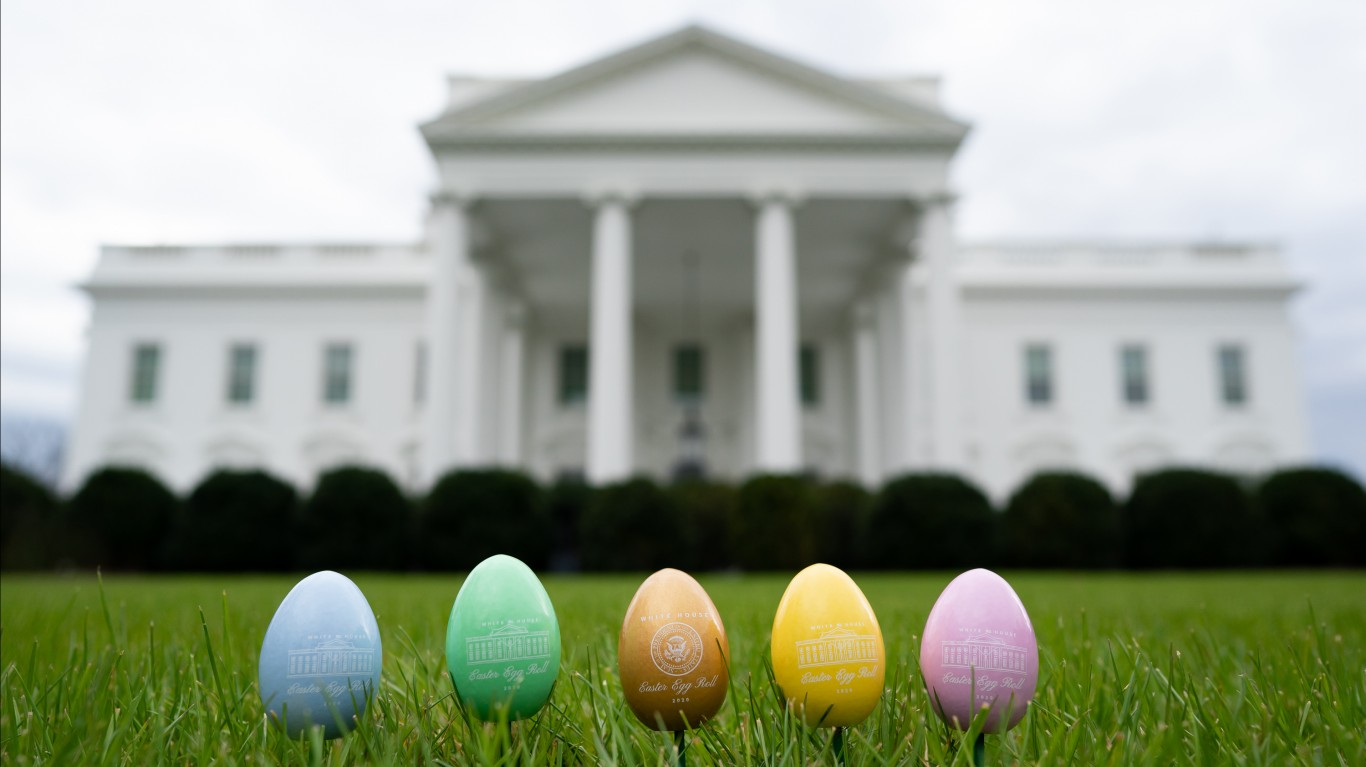
10. First White House Easter Egg Roll took place in 1878
One major Easter tradition is the White House Easter Egg Roll. In the 19th century, children would roll Easter Eggs down Capitol Hill, before curmudgeonly lawmakers sought to stop crowds from gathering and banned the practice. President Rutherford B. Hayes stepped in, allowing Washington, D.C. area kids to roll eggs down the White House lawn.
Since the tradition began, the White House Easter Egg Roll was canceled a number of times for many reasons, including during both World Wars. After WWII, the event did not begin again until 1953 because of food rationing efforts as well as White House renovations. Since then, inclement weather has halted the Egg Roll five times. COVID-19 nixed the event in 2020 and 2021, though President and first lady Biden hope to host the White House Easter Egg Roll in 2022.
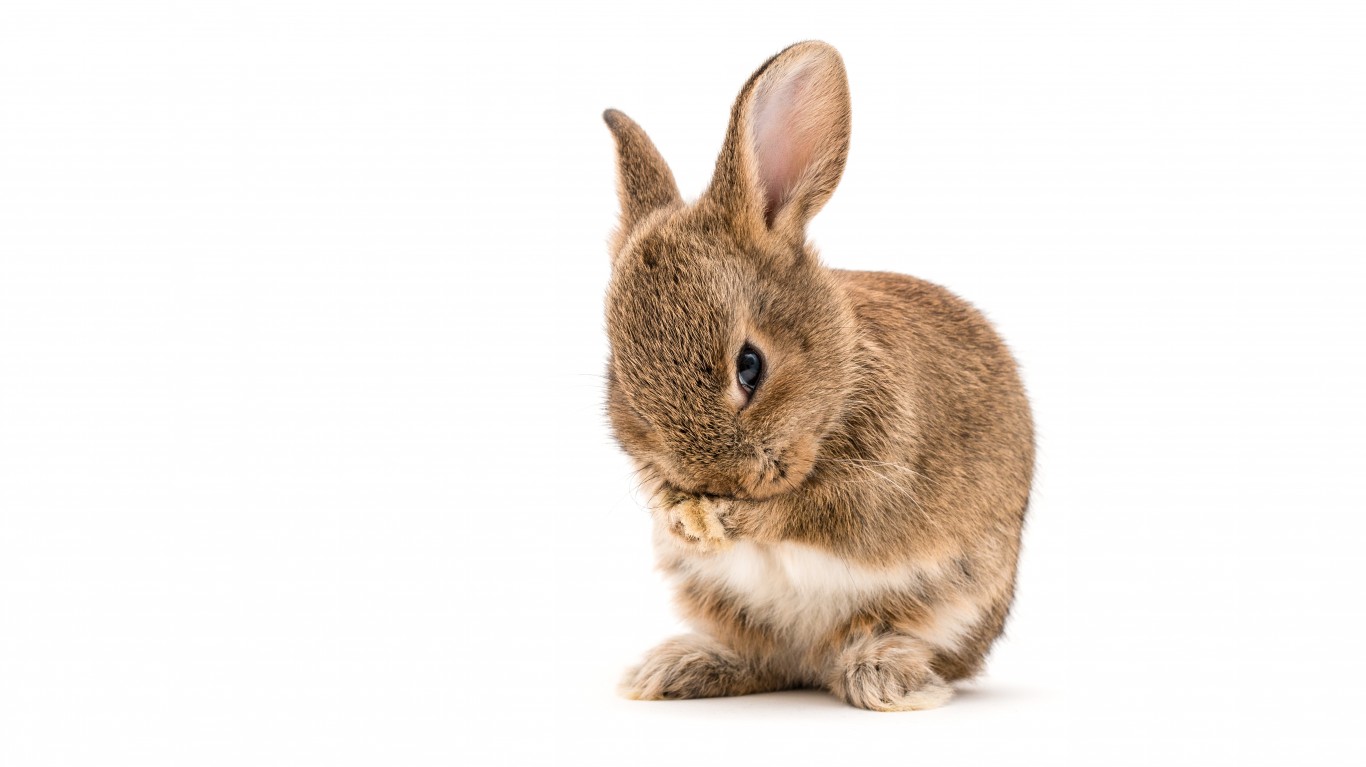
11. The Easter bunny comes from Germany
Though the Easter Bunny is a beloved figure for millions of American kids, perhaps they should be calling it “Osterhase” — German for the Easter hare. The Easter Bunny is German in origin, with the legend perhaps beginning because farmers would have to pay dues to landowners with whatever food they had around Easter, which was often wild hare and eggs.
The first recorded mention of such a character appeared in a 17th century German medical essay. Dr. Johannes Richier told of a Western German legend that the Osterhase’ would leave colored eggs around homes and gardens. He pointed out that eating eggs left out overnight could result in stomach aches. Today’s kids are likely finding and eating completely different eggs — chocolate-shaped eggs and other sweet treats hidden in plastic eggs — though they are probably getting similar stomach aches.
[in-text-ad]
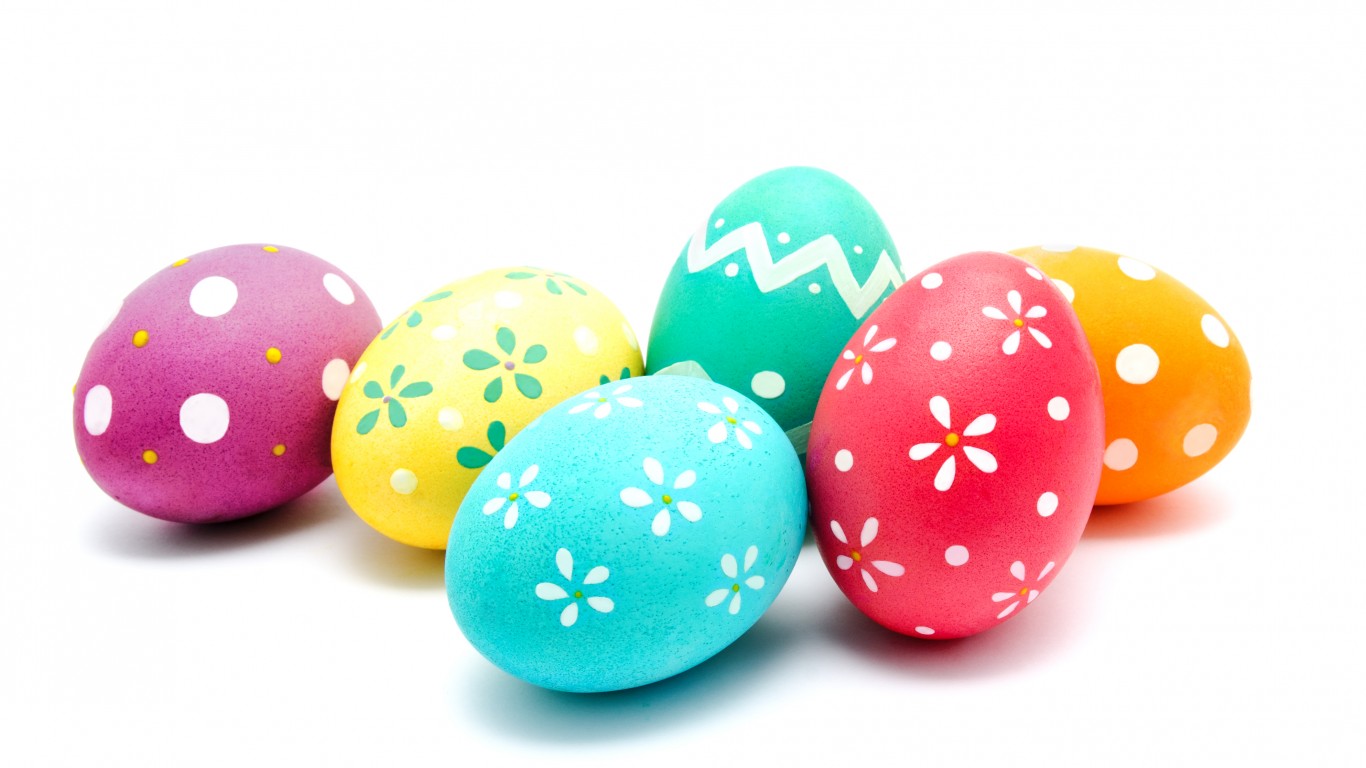
12. 42% will be dyeing eggs
Dyeing Easter eggs is one of the most common ways people celebrate the holiday — especially those with kids. Though less than half (42%) of all Easter observers will take part in the process of decorating their own eggs, nearly 80% of all parents who celebrate said at least one part of their Easter festivities involves dyeing eggs.
Around 180 million eggs are purchased for Easter, whether to dye or eat. Over 10 million Easter egg dyeing kits are sold annually.
13. 1,200 people volunteer for the White House Easter Egg Roll
Though 2021 is the second year in a row the annual White House Easter Egg Roll is canceled due to COVID-19 concerns, it is always a big event when it takes place. In fact, it takes 1,200 volunteers to make sure the event goes smoothly.
These volunteers help wrangle the more than 30,000 attendees in a typical year. They provide crowd control, line management, give directions, and scan tickets, among their many duties.

14. $49,000 is the price of the most expensive chocolate bunny
Chocolate bunnies tend to be the centerpiece of any sweet-toothed child’s Easter basket. But no bunny may ever top one such chocolate sculpture that was released in 2016.
The now-defunct company VeryFirstTo offered a chocolate Easter bunny with a record-setting price tag of $49,000. The 15-inch tall bunny was sculpted by award-winning chocolatier Martin Chiffers, using only the finest Tanzanian chocolate and intricate wood-carving tools over the course of about 40 hours. The 11-pound bunny translated to over half a million calories and was accented with gold leaf eggs. Its eyes were made from two 1.7 carat diamonds, which were each worth over $17,700 apiece.
[in-text-ad-2]
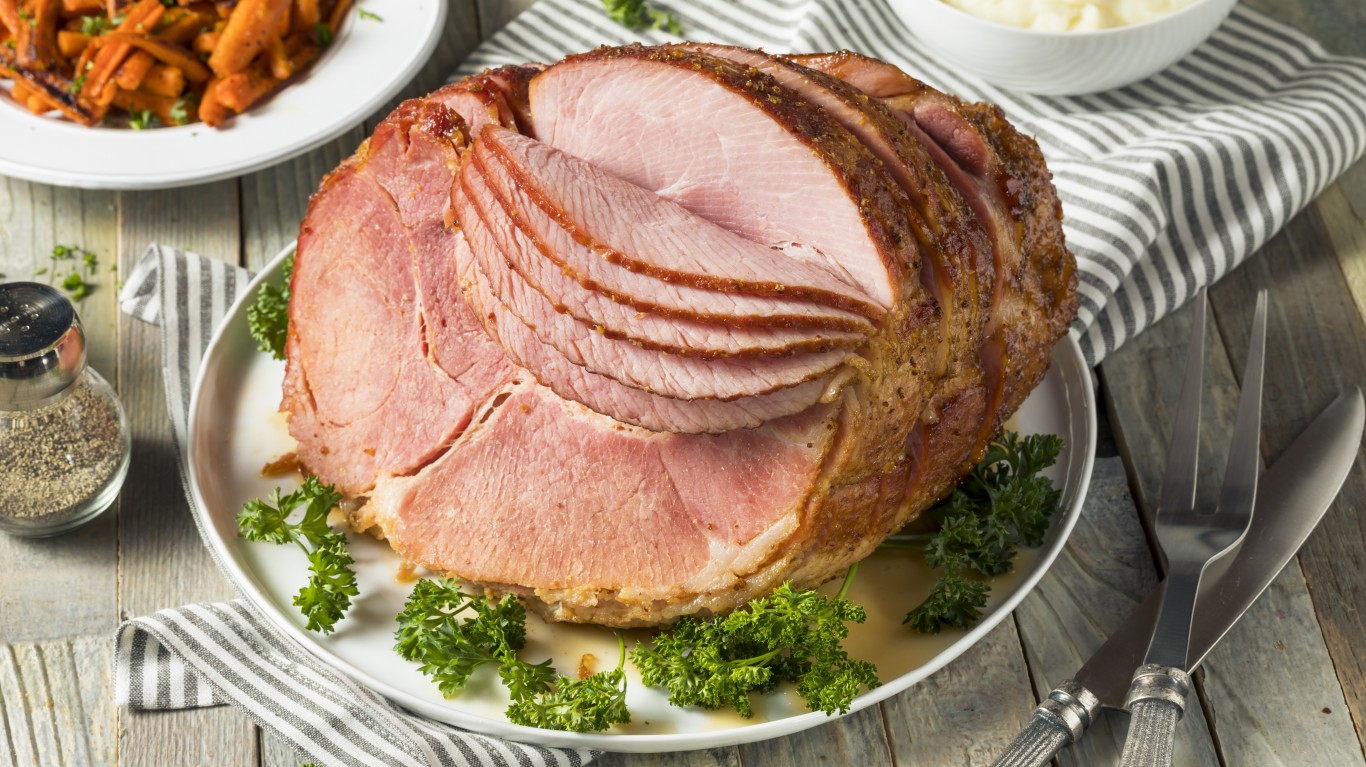
15. $6.3 billion to be spent on food
Americans celebrating Easter this year are expected to spend about $6.3 billion on food, including eggs, bread, meat pies, and other popular Easter dishes. This accounts for nearly 30% of the $21.6 billion Americans are planning to spend on the holiday, a much larger share than they will spend on candy, new clothes, or gifts. Per celebrant, this breaks down to more than $52 on food alone.
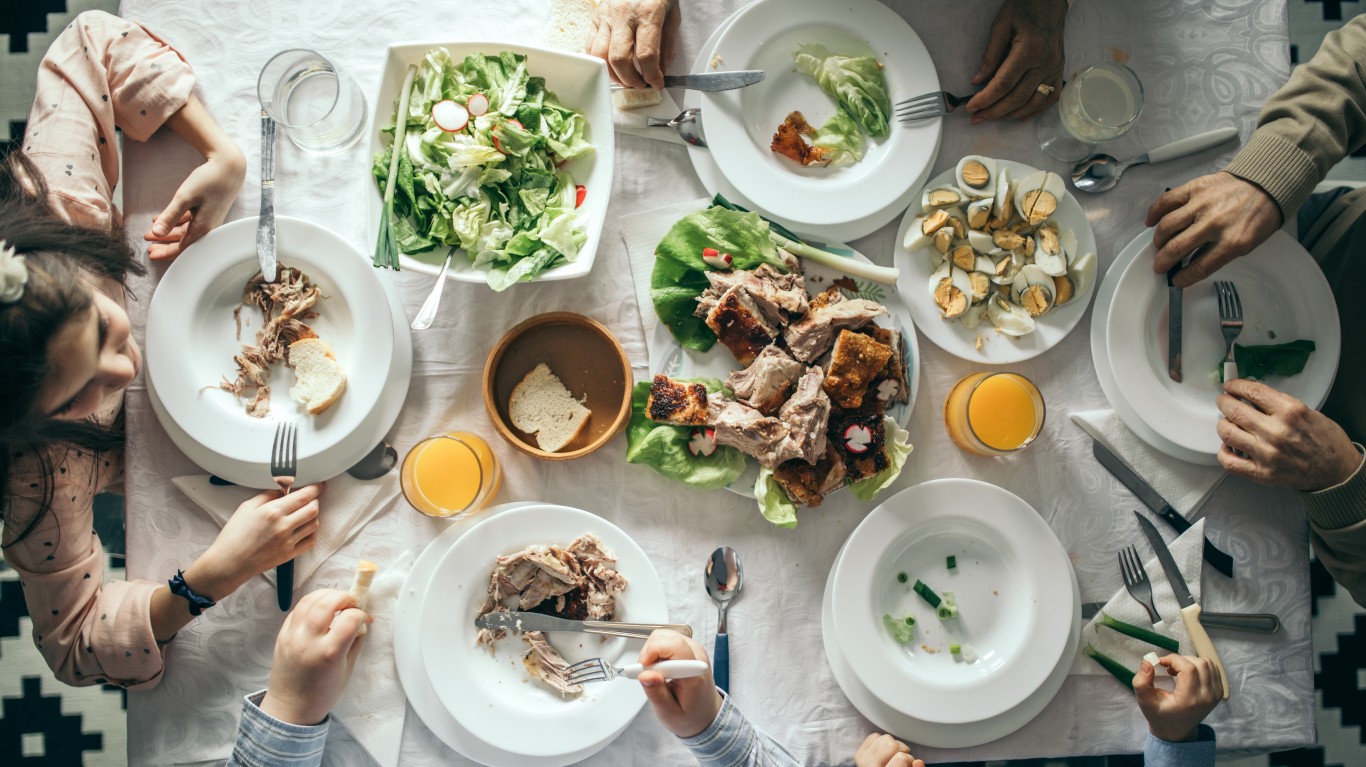
16. Most Americans plan to cook a holiday meal to celebrate Easter
The most commonly held Easter tradition across all ages and regions in America is a holiday meal. The vast majority of people who observe the holiday say they plan to cook a special meal. Easter follows the 40-day period of Lent, in which many people refrain from something they like, often a type of food.
Lenten fasts used to be very restrictive in the Middle Ages, banning the consumption of all kinds of animal products until Easter, when people would feast on the meats and cheeses they had given up for over a month.
[in-text-ad]
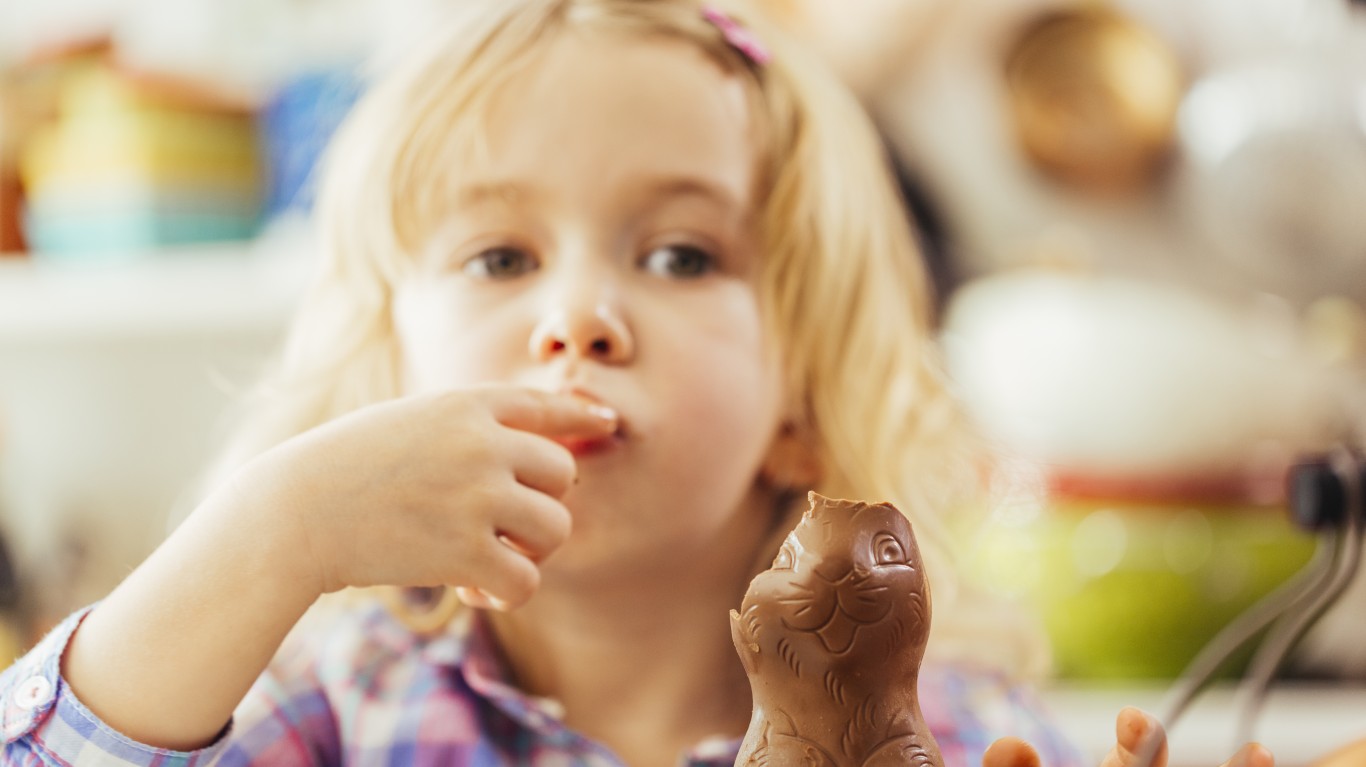
17. Largest ever chocolate Easter bunny
Many children would likely say they want their chocolate Easter bunny as large as possible, but even the hungriest kid couldn’t eat the largest Easter bunny ever. In 2017, Brazilian chocolatiers at the Equipe da Casa do Chocolate set a Guinness World Record by creating a chocolate bunny weighing 9,359.7 pounds.
The colossal chocolate creation was nearly 15 feet high and required nine pro chocolatiers to work for eight days straight to complete. It may have packed in more than 22 million calories.
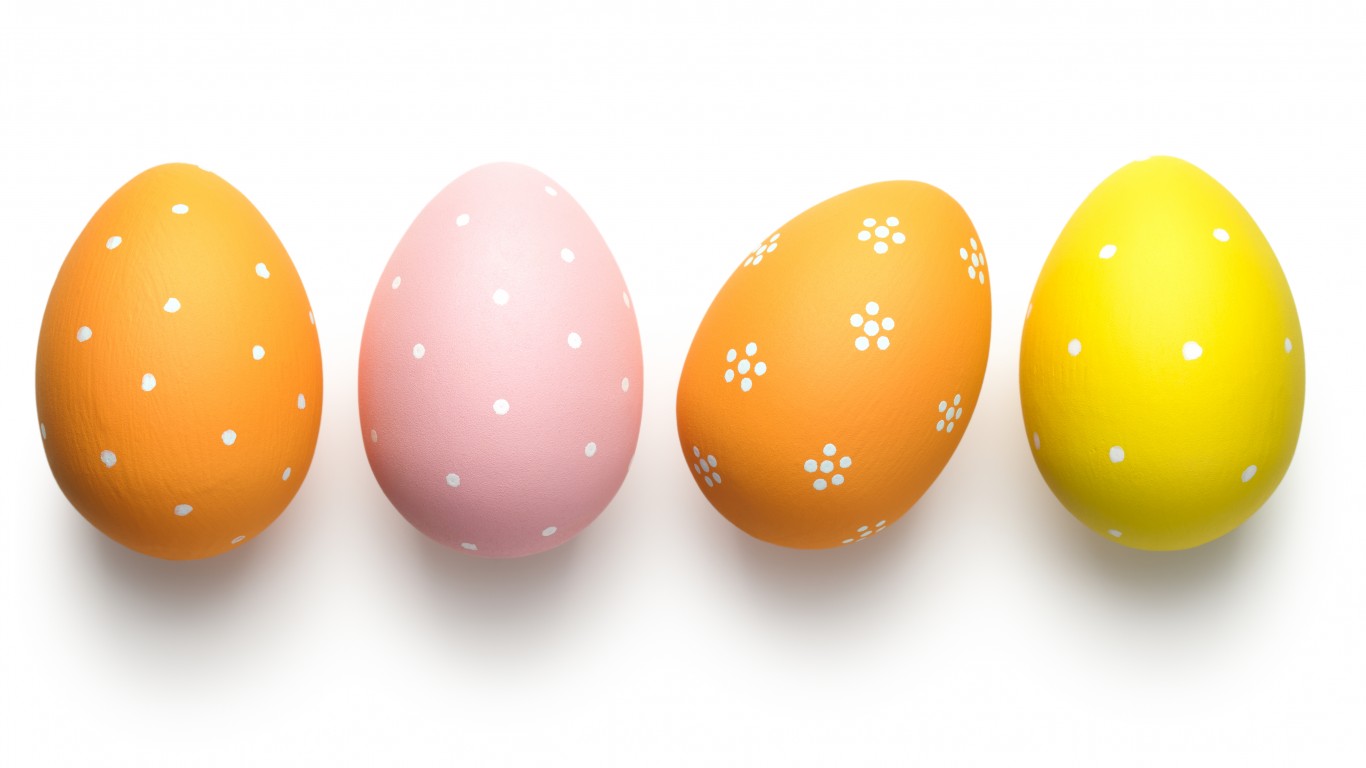
18. 501,000 eggs were hidden in the largest egg hunt ever
Few things are more disappointing to a child than finding out that their Easter egg hunt has come to an end. In 2007, the Cypress Gardens Adventure Park in Winter Haven, Florida, found a solution by hosting the world’s largest ever Easter egg hunt. The park scattered over half a million eggs for children and their parents to hunt.
California organizers tried to top the record in 2015 by having a 510,000-egg hunt at the state Capitol’s mall in Sacramento, but the event was a disaster. Parents and children shoved each other in a mad dash for large clumps of eggs, and the eggs used in the event didn’t even arrive in time to register and be certified by Guinness World Records.
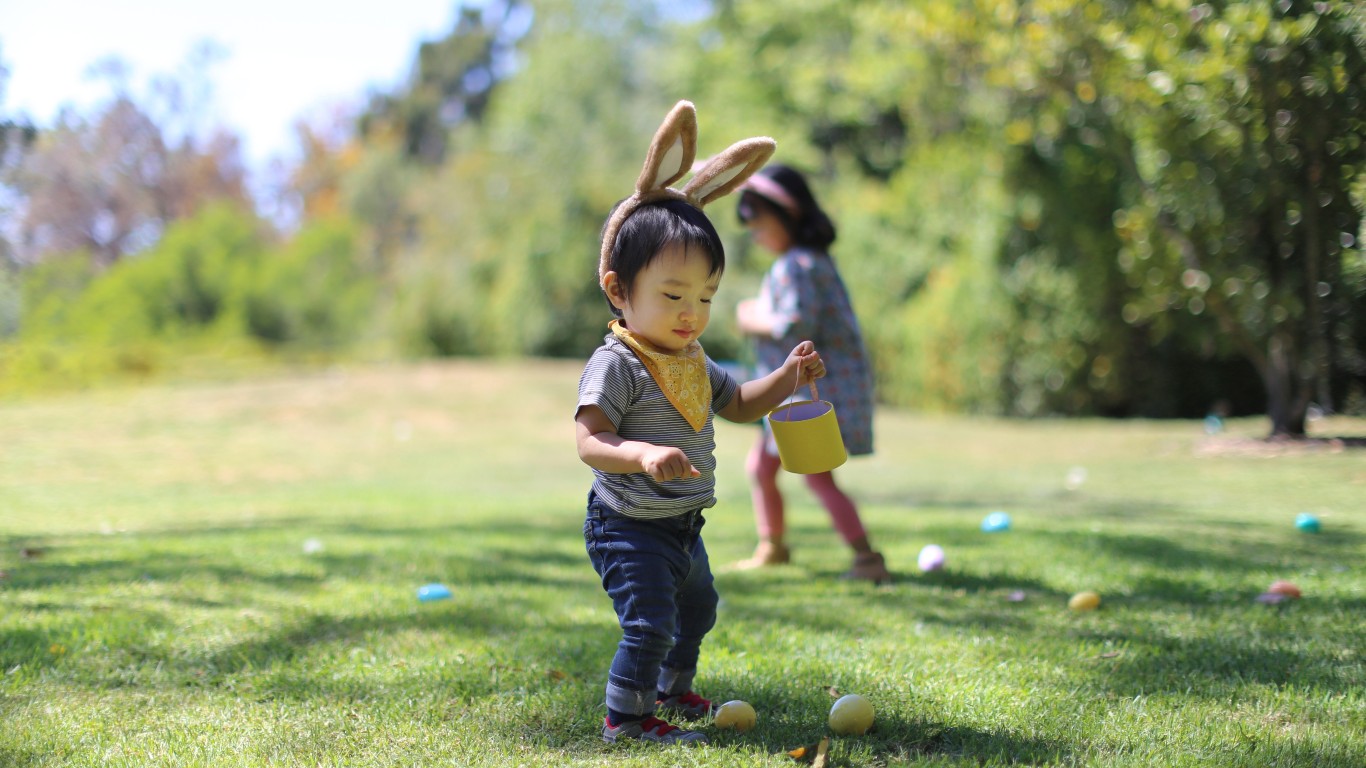
19. 52% of families will have an Easter egg hunt
Unlike mass egg gatherings, many parents opt to bring their kids to smaller events, either at local public parks or at their church. Though events like these will largely be canceled due to COVID-19, the majority of families celebrating Easter still plan to hold some kind of Easter egg hunt, maybe just in their own homes or backyards.
[in-text-ad-2]
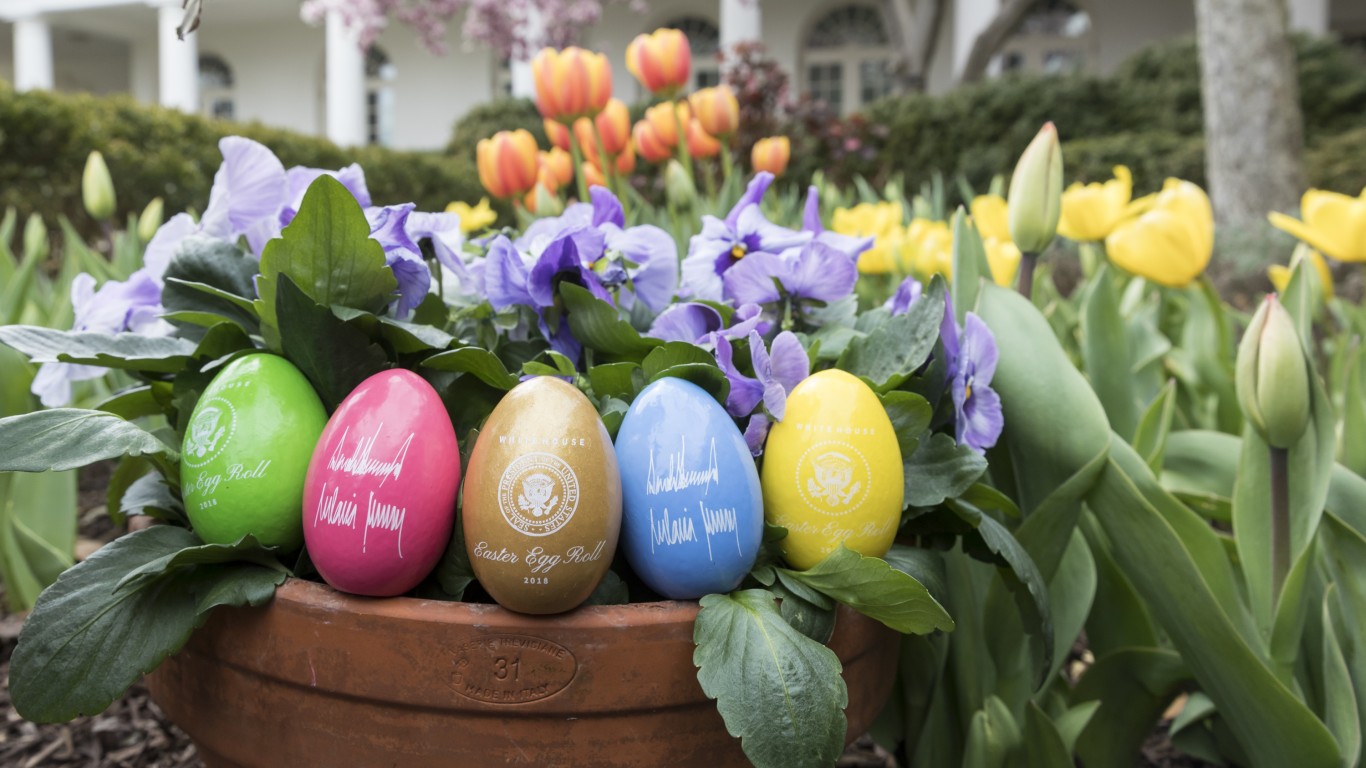
20. 80,000 souvenir eggs are made for each White House Egg Roll
Though the White House Egg Roll is not taking place in 2021, you can still buy the traditional commemorative wooden egg associated with the event. In a normal year, the White House produces more than 80,000 of these souvenirs, both to give to kids in attendance and to sell to the public. These wooden eggs are stamped with the President and first lady’s signatures.
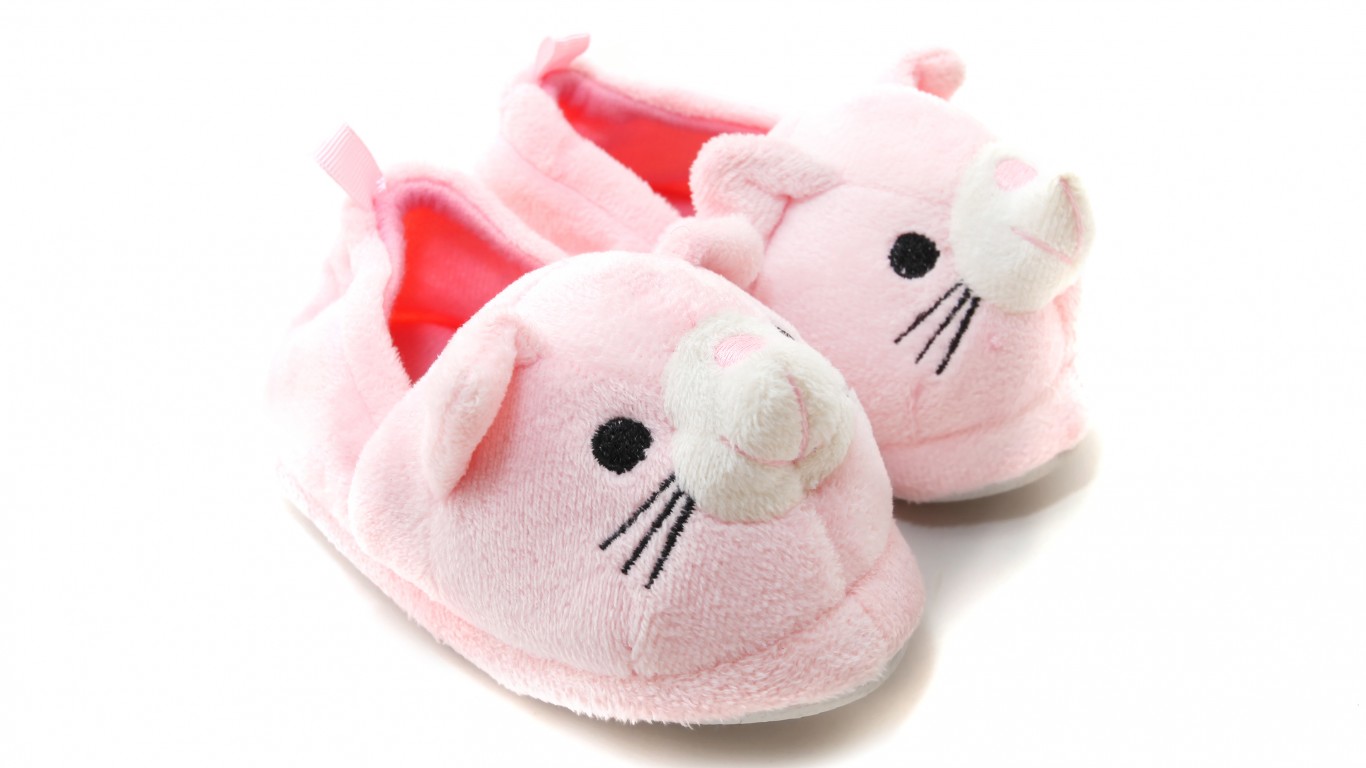
21. $3.7 billion to be spent on gifts
People are generous when it comes to Easter gifts. Examples of typical Easter gifts include pastel bunny soaps, bunny ring holders, mache eggs, and rabbit ear slippers. All told, Amercians will spend an estimated $3.7 billion on Easter gifts in 2021.
[in-text-ad]
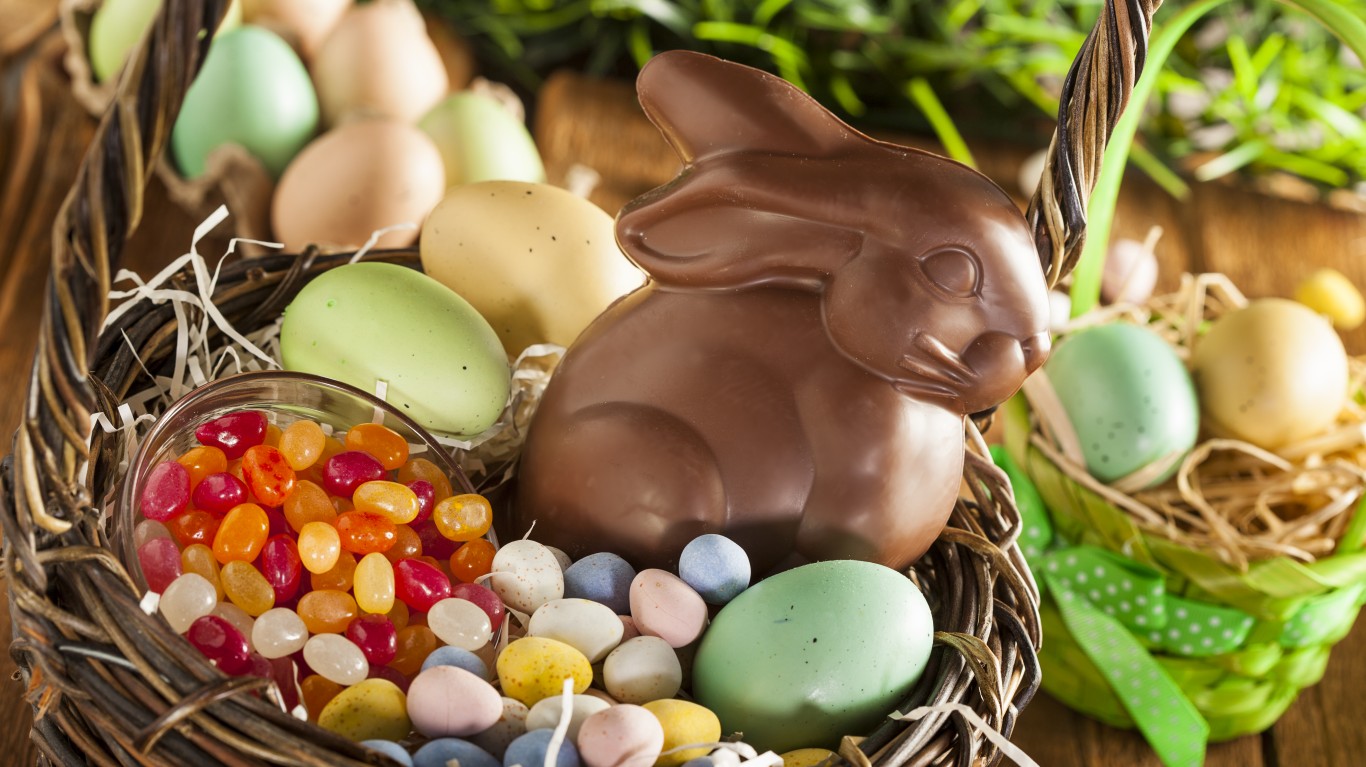
22. 42% will be making gift baskets
Easter gift baskets are wicker baskets stuffed with candy, toys, Easter eggs, and other trinkets kids might like. These rank as one of the most popular Easter traditions, particularly among families, as 42% of families say they will be making gift baskets.
23. Good Friday is only honored in some states
The U.S. has 10 federal holidays in which all federal employees have a day off, and many private companies have followed suit. Interestingly, Easter is not one of them. Easter is always on a Sunday, which is already a day off for most workers. And the Friday before Easter, known as Good Friday, which commemorates the day Jesus Christ was crucified, is also not a federal holiday.
A dozen states, however,recognize Good Friday as a state holiday — Connecticut, Delaware, Florida, Hawaii, Indiana, Kentucky, Louisiana, New Jersey, North Carolina, North Dakota, Tennessee, and Texas. The New York Stock Exchange is also closed for Good Friday.
24. Over 1 billion Peeps consumed each year
Peeps are one of the most contentiously debated Easter traditions, sparking many internet discussions about whether they are a delicious holiday treat or sickening sugar fluff. Clearly enough people like Peeps — marshmallows shaped into baby chicken shapes — that they are still a staple in many Easter baskets.
Over 1.5 billion Peeps are consumed each Easter, and in 2021, Peep adherents will have more than 20 flavors to choose from. They can also wash down their Peeps snack with a Peeps soda. Pepsi and Peeps released a limited edition collaboration cola — Pepsi with Peeps’ marshmallow flavoring.
Thank you for reading! Have some feedback for us?
Contact the 24/7 Wall St. editorial team.
 24/7 Wall St.
24/7 Wall St.